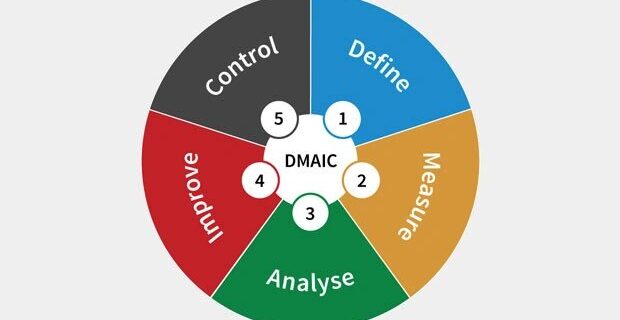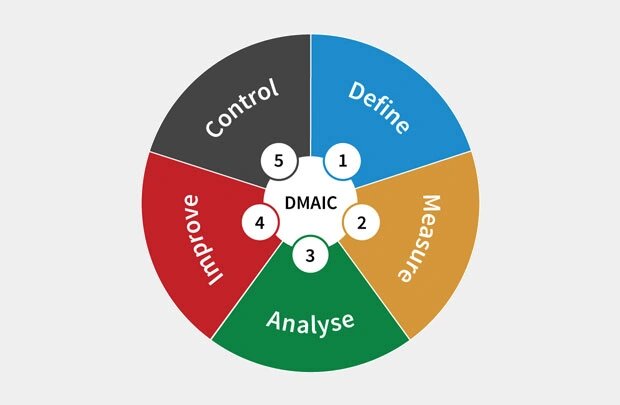
The concept of the Six Sigma methodology is somewhat recent, arising around the 1980s . However, quality methodologies have been around for longer. They emerged in 1798, when Eli Whitney introduced the concept of consistency and defect identification, analyzing product quality.
From there, people began to understand and structure what it would be like to observe and monitor the quality of the product being produced.
In the evolution of this thinking, as early as 1924, Shewart introduced the concept of statistical quality control. That is, we now use statistical tools to monitor the variability and stability of my process.
Thought was beginning to turn to the process, as this way it is possible to predict whether we are producing within a specification, within a defined quality. (One of the most used tools for this is the control chart .)
In the 1950s, after World War II, the Japanese had to restructure. At that moment, they realized that they needed to learn how it was possible to produce with quality and low cost. After all, a war wreaks havoc, right?
So they called in Deming , who went to Japan to teach a little about the concept of PDCA, continuous improvement and statistics. He showed how it was possible to use PDCA combined with some tools to work on the issue of quality during production.
In 1954, Juran goes to Japan to present some principles of quality management. At this point, a concept closer to what we have today is built, where quality is delivering what the customer wants, within a specification, analyzing costs, stability and standardization of the process.
Arriving in the 1960s, Kaoru Ishikawa creates what he calls a quality control circle. But what is this? It is a group of tools that you can use in evaluating a process or production.
They are tools that serve to adequately monitor the quality of a company , a plant, a factory. Thus, it is possible to monitor and control if any defect arises, any anomaly occurs, making it possible to map and propose corrective action.
Also Read : Six Sigma MCQ Question & Answers
Table of Contents
What is Six Sigma?
The Six Sigma methodology is a management system . It is quantitative, structured and disciplined. Quantitative, as it works with data-based statistics. Structured, as it uses the DMAIC method. Disciplined, as it requires a minimum time of dedication due to a good result.
This methodology works with three main objectives, which are: cost reduction, optimization of products and processes and increase in customer satisfaction.
If you apply Six Sigma in initiatives that involve these goals, you will always be able to work on projects that deliver greater profitability and better results for companies.
Perhaps you might be thinking that the application of this philosophy is only for complex issues, and that’s a misnomer! There are Six Sigma projects to reduce travel accommodation costs, reduce fixed costs such as electricity bills, water bills, among others.
Every company is concerned with the satisfaction of its customers. Thus, the Six Sigma methodology has been widely used in order to reduce the Lead Time of processes, increasing customer satisfaction and loyalty.
After understanding what it is and knowing the importance of six sigma, I invite you to discover our ebook, a complete material about six sigma, where you will be able to learn in depth about this incredible methodology that has revolutionized the results of several companies.
Six Sigma Methodology and its Evolution
Naturally, the methodology has evolved a lot since its inception until today. This evolution is continuous, and Six Sigma began to be applied in several companies and several businesses.
Through this evolution, the number of tools that the Six Sigma methodology uses has increased. A number of features were tested, and today it is possible to understand which ones work best.
This natural evolution was also linked to a technological evolution, as today there are several software for analyzing statistical data. Calculations that previously required multiple accounts are now efficiently resolved in Minitab software, for example. Much better right?
Six Sigma Philosophy and Its Worldwide Reach
Over time, the Six Sigma methodology was gaining ground among US companies and industries, until Jack Welch , CEO of GE (General Electrics), bought the idea.
He implemented the Six Sigma methodology at GE and had a fantastic result in terms of earnings. So Jack Welch made a huge advertisement for 6 Sigma to the world, expanding the methodology far beyond US limitations.
Today, Six Sigma has been widespread in all continents, in several companies, and in USA it could not be different. But, by now you may be asking yourself: what is the Six Sigma methodology after all?
How did the Six Sigma methodology come about?
With this evolution of the concept of quality, the Six Sigma methodology finally appears at Motorola , in a scenario where the importance of analyzing the quality of the process and the product was already known. Thus, it begins to use this philosophy in order to improve its quality and also its competitiveness in the market.
The Six Sigma methodology is a management strategy, where you define how your routine will be and how you will develop an improvement work in your processes, in your company.
This philosophy proposes working through the DMAIC method , which is very similar to PDCA , and the use of statistical tools to monitor and control the quality of the process. This method is divided into 5 steps:
- Definition: defines what is expected of the project.
- Measurement: obtaining data about the process.
- Analysis: Identify the root causes of the problem.
- Improvement (Improve): Propose a solution for each root cause.
- Control: monitor the results achieved.

It is possible to see that Six Sigma was born in this context of quality evolution, both in the United States and in Japan, with the Japanese creating a concept of quality, being a reference in the Toyota Production System, also known as Lean Manufacturing .
Six Sigma Application Areas
One of the interesting factors of the Six Sigma methodology is that it can be applied in several areas. It encompasses both more industrial production processes, as well as administrative ( Lean Office ), logistical ( Lean Logistics ) and healthcare-related processes ( Lean Healthcare ).
Thus, I can have Six Sigma projects in various sectors of a company, such as finance, HR, marketing, and also on production lines, which is a more operational area.
A chemical company could use this philosophy to increase the efficiency percentage of a bioreactor. A metallurgical company to reduce the percentage of scrap in steel production.
A retail company could apply the methodology to work on reducing the amount of invoices issued and a hospital could reduce queue time for screening its patients.
As you can see, the Six Sigma methodology has numerous applications, being increasingly used, especially in the midst of a crisis, where it is necessary to reduce costs and optimize results.
Reliable data: a crucial point
As you saw, this methodology is very quantitative. Therefore, it requires a very big concern in relation to the database used during the process.
Whenever a project theme is defined, this theme must be linked to a metric , an indicator. This metric must always be measured with reliable data.
How are you going to control the quality of a process if the data you have is unreliable? How can you say you are being done right or wrong if your control is based on non-real data?
Therefore, a lot of attention is needed when obtaining a database. Many people sin when they apply this methodology when trying to buy time in this step, which is so crucial throughout the project.
On top of reliable information, you can see if your process has a lot of variability, a lot of dispersion, if with the available information it is possible to reach the goal set for the project, or if you need to make some adjustments before moving on to the next step.
Practical process analysis
To better understand how the use of Six Sigma methodology works, imagine a process where you have 99% yield. Suppose 99% of the time you do it right, and 1% you do it wrong. Is this a good level of income?
In this case, we need to evaluate the process we are dealing with. For some processes, 99% throughput is a great number. For others, it may not be satisfactory. So you might be wondering: when 99% efficiency isn’t going to be good? Come on, see some examples.
The Itaipu plant produced 103.1 million MWh last year. Now imagine that 1% of that production was lost in the process. How much would we be talking about? That would represent 1.031 million MWh wasted, enough to supply more than 6 million homes!
As in this case, we can think of a hospital that delivers 200 births a month. If this hospital is 99% efficient, we will have 2 unsuccessful deliveries per month. That is, a low number of errors per month, but still unacceptable.
The knowledge that makes a difference So, did you like the Six Sigma methodology?
Now you understand the history of the Six Sigma methodology, and you can understand which processes can have different levels of quality.
It is possible to notice that if a process is bad, we can use this philosophy to make a significant leap in quality, optimizing the results obtained.
Therefore, this brings a positive return for the company, after all, a quality process will certainly generate a financial return, greater customer satisfaction and a series of benefits.
Also Read : Veloci-Q | Business Process | Six Sigma | Question and Answers


